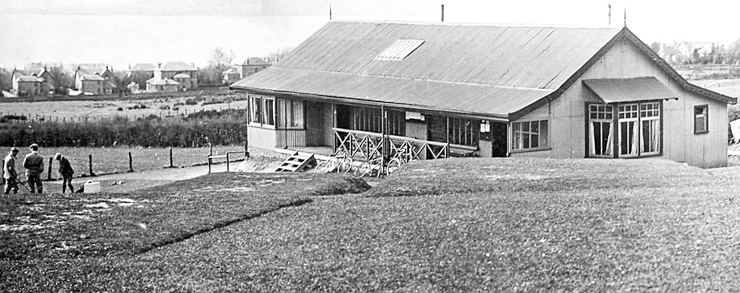SCOTLAND is universally acknowledged as the home of golf, and bald statistics show that this is no myth.
In 2002 Scotland was ranked as world no.1 in terms of golf courses per unit of population, the next five being Ireland, U.S.A., Wales, Sweden and England.
It was here that the modern rules of golf were established, in the wake of a long embryonic period.
The first documentary evidence of the game in Scotland famously comes in the form of an Act of the Scottish Parliament in 1457, seeking to discourage the playing of football and ‘gouff’, since more martial activities, such as archery practice, were perceived to be losing out.
That such a move was made obviously implies the game was already well-established. Whether it actually came into being in Scotland or the Low Countries is another matter.
Golfing researcher and geographer Robert Price, in his fascinating book “Scotland's Golf Courses” (2nd edition 2002) has identified six key phases in the evolution of the game.
These were a long infancy pre-1735; the rise of golf clubs and attendant rules between 1735 and 1850; a period of modest expansion between 1850 and 1880; the first golf boom between 1880 and 1909; a phase of consolidation and steady growth from 1910 until 1979; and lastly the second golf boom from 1980 into the Millennium.
The remarkable thing about the little golf courses of the Lennox, which centres on the area from Dumbarton and the Vale of Leven in the south to Arrochar and Tarbet in the north — not the full extent of the historic Lennox — is that eleven of them were born in the first golf boom of 1880 to 1909, where previously there was none.
While golf course and golf club are often thought of as synonymous, this need not always be the case.
Here is the list: Dumbarton (1888), Craigrownie/Cove and Kilcreggan (1890), Shandon (1890), Helensburgh (1893), Cardross (1895),
Garelochhead (1895), Barremman/Clynder (1896), Jamestown (1902), Arrochar and Tarbet (1904), Luss (1907), Vale of Leven (1907).
The word “little” is appropriate in referring to these courses, because all began with 9 holes or less.
It may come as something of a surprise to see golf courses like those at Dumbarton, Helensburgh, Vale of Leven and Cardross included in the list, bearing in mind their rapid progression to a full 18-hole course and their successful continuation to the present day, but the fact is that three of them began life as 9-hole facilities.
Cardross had even more humble origins, starting off with a mere 6 holes.
It is however worth pointing out that Helensburgh alone had ambitions for an 18-hole course right from the outset, but circumstances at the time dictated that this did not happen for some years.
The most obvious questions must be: what was behind the golfing boom nationally, and what in particular caused the Lennox to embrace golf so wholeheartedly?
In relation to the first point, Robert Price offers two main reasons, the growth of population and the growth of urbanisation. One might be tempted also to suggest increasing affluence and leisure opportunities, at least for some.
As to why golf took off so widely in the Lennox, this could simply have been due to the district mirroring what was happening elsewhere, but perhaps it was also a case of a good idea catching on, or to put it more cynically, “keeping up with the Joneses”.
In contrast to places like Helensburgh and Cardross, many of the golf courses described here no longer exist, those at Arrochar and Tarbet, Barremman, Craigrownie, Garelochhead, Jamestown, Luss and Shandon.
Why should this have been so? There are undoubtedly many possible reasons, but there are several factors in common.
A golf course and club with a small catchment area, unless uncommonly well-endowed, is always going to find generation of the necessary resources a major challenge.
Morale might be the more easily undermined in the case of a small membership base.
While visitors, perhaps drawn by the often-outstanding natural setting, might provide a welcome boost, their presence would inevitably be mostly weather and season dependent.
They could be thought of as the icing on the cake, with the basic ingredients coming from loyal members and supporters.
Consider too the relative difficulty of maintaining in good condition a golf course in a wet and hilly area, in contrast to its links course counterpart, where terrain, vegetation growth and drainage are so much easier to manage and control.
Yet another challenge, faced by several courses, was competition for the use of land. Here, ownership of the land by the golf club, as opposed to a lease, could be an important factor.
It might be supposed that the growth of personal transport could also have played a part, with golfers willing and able to travel to an 18-hole course with better facilities, but in fact most of the courses that closed did so prior to the era of mass car ownership.
It is true that virtually all of the courses that survive have had their ups and downs over the years, but their bigger membership and resources helped buffer them against the storm clouds of misfortune.
One point that cannot be emphasised enough, however, is that some of the courses and clubs that no longer survive did not go down without an heroic struggle for survival.
Whatever the reason, or reasons, for closure, many of the little lost golf courses of the Lennox are in danger of being forgotten about, save for the occasional glimpse of a former tee.
What virtually all the traditional golf courses of the Lennox share in common is that they were first and foremost by local people for local people.
They stand in sharp contrast to a number of courses established in recent years, a period coinciding with Price's “second golf boom”, and which are exemplified by commercially-driven, up-market projects.
In this latter respect, golf courses like Loch Lomond and the Carrick spring to mind.
From a modern perspective, we may well take issue with some features of late Victorian and Edwardian society, but one thing it did possess was a “can-do” attitude, where even small communities ably demonstrated the drive and ability to successfully provide their own leisure facilities.
While golf is the chosen theme here, one might equally point to pastimes such as curling, where not only bigger places like Helensburgh had their own pond, but likewise smaller communities like Cove and Kilcreggan, Arrochar and Tarbet, and Luss.
Golfing in the Lennox showed that it was ahead of its time in terms of sex equality, with lady members present more or less from the outset at virtually all clubs.
Sunday golf was somewhat more contentious. At Cardross a vote was taken in 1928, with 230 for and 80 against. By comparison, it was not until 1936 that Sunday golf was allowed on Glasgow Corporation courses.
These small courses typically had inter-club matches as well as internal competitions, but moves were afoot at an early stage to create organisation at a more regional level.
Thus, in 1896, letters were sent to clubs soliciting membership of a Dunbartonshire Golf Union. Representatives attended from Barremman, Bearsden, Cardross, Dullatur and Helensburgh, along with host club Dumbarton, and were favourable.
Kirkintilloch and Lenzie, previously in favour, now hesitated. Milngavie was against, whilst Garelochhead and Craigrownie failed to respond.
Garelochhead affiliated the following year, but withdrew two years later, at which time Cardross and Dullatur also withdrew, followed three years later by Barremman.
Cardross however, subsequently re-joined. Such were the shifting sands of those formative and heady years.
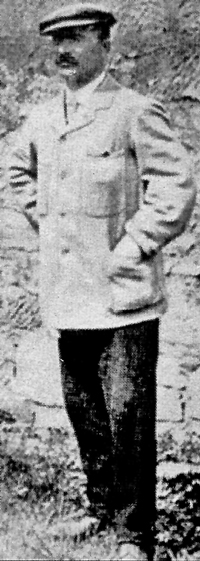 Course design, a vital consideration. Most of the clubs employed the services of a consultant, typically a professional golfer, in planning the layout.
Course design, a vital consideration. Most of the clubs employed the services of a consultant, typically a professional golfer, in planning the layout.
Helensburgh went for perhaps the biggest name of all in the shape of golfing legend Old Tom Morris, four-times winner of the Open. Dumbarton had W. Charles Hunter of Prestwick, while the first course at Shandon was to the designs of Robert Simpson of Dalhousie.
The name that really stands out in the Lennox, however, is that of Willie Fernie (1858-1924), winner of the Open in 1883, and runner-up on four occasions.
Fernie was responsible for the lay-out of the first course at Arrochar and Tarbet, the second course at Cardross, the course at Barremman, and the second course at Shandon.
It is possible that he was involved with others, as in several cases the names of designers have not come to light.
Hailing appropriately from St Andrews, Fernie spent most of his career as professional at Troon. In his memoirs, he recalls how he became a professional by default, while still a young lad.
The winner of an early competition, the small monetary prize that he received immediately marked him out as a paid golfer.
The consequence of this new-found status was quickly brought home to him to him when next he entered the portals of the Royal and Ancient at St Andrews, and he was swiftly shown the door.
This however did not prevent his subsequent career as successful golfer and course designer.
Shandon
Hotels and golf courses often go together — as controversial Trump Turnberry owner Donald Trump might say — and that was the case on Garelochside in 1890.
The first golf course at Shandon differed from most others of that era because it was not a community project, it was the initiative of Shandon Hydro.
The Shandon Hydropathic opened in the palatial former home of engineer and shipbuilder Robert Napier in 1878 and was very proud of the many facilities it offered to its well-off guests.
It boasted 74 acres of grounds, and many leisure facilities were on offer apart from the extensive water treatments.
In addition to tennis courts, cycle tracks, pathways and promenades, a nine-hole golf course was prepared and opened in 1890.
The course was a private one, and there was no associated golf club, as far as is known. Holes ranged from 300-500 yards in length, while a less demanding course for ladies was also provided.
For reasons unknown, this course was replaced by another one of nine holes designed by Willie Fernie in 1894.
It was similar to courses at Bridge of Weir and Kilmacolm, and it was said to bear favourable comparison with either.
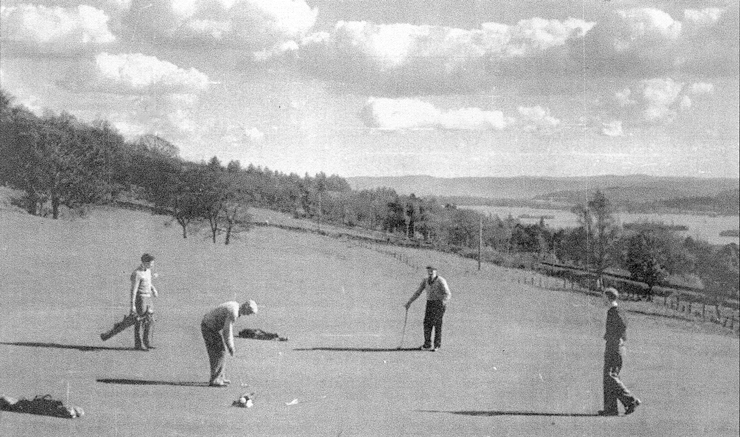
The new course was set in a different location from its predecessor, as it was above the new railway line.
The first three holes went straight up the hill, and they incorporated a steep ravine as well as a burn. The fourth was short but blind over a hill, while the fifth, also short, required players to surmount an expanse of heather.
The sixth was 400 yards, but was level, running parallel to the railway; the seventh was very short, as was the eighth, while the last hole was also short, played alongside the railway.
The views of the area from the course were thought to be quite magnificent.
During the First World War, the Hydro was requisitioned by the Royal Navy as an emergency hospital, and facilities like the golf course went out of use.
It was 1922 before the Hydro was able to open its doors again, and the golf course was swiftly returned to use as one of the many outdoor amenities.
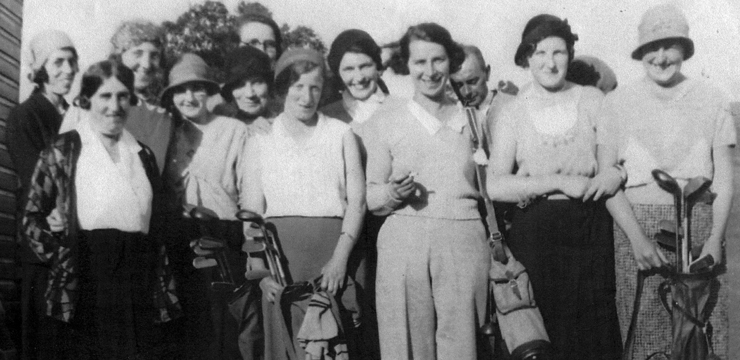
As a way of celebrating, the proprietors announced a competition, when the course would be thrown open to members of the Garelochhead club.
A few years later the Hydro proprietors handed over the running of the golf course to the newly-formed Shandon Golf Club.
The first published mention of the club to come to light so far dates from May 1929, when a friendly match was played with Craigrownie at Shandon. The visitors won 9-0.
It was not long before the name of Shandon began to become known to the wider golfing public, thanks to the emergence of one of the finest golfers ever to come from Scotland, Tom Haliburton (1915-1975).
Rhu-born Tom was the son of Mr and Mrs Robert Haliburton, of Louden Cottage, Shandon, and cut his teeth on the Shandon course, which he recalled as a very good one on which to learn.
 Tom first came to public attention in 1931, when he reached the final of the West of Scotland Boys Championship, played at Troon.
Tom first came to public attention in 1931, when he reached the final of the West of Scotland Boys Championship, played at Troon.
It must have been a proud moment for Shandon Golf Club, whose officebearers at this time included Thomas Nisbet as president, James Brown as captain, both Helensburgh residents, James Dunbar from Rhu as secretary, and Thomas McKay as treasurer.
The quality of Tom’s play soon dictated that he should take up a career as a professional golfer, and by 1936 he was employed as assistant professional at the prestigious Haggs Castle course and was already taking part in the Open.
His marriage to Ada Wheatly took place in 1941, by which time he was serving as a P.T. Instructor in the RAF.
After the war, he served as professional at a number of courses and is particularly associated with the prestigious Wentworth club, and in fact he died out on the course there.
Remembered as a successful Ryder Cup and tournament player, his best finish in the Open was to tie for fifth in 1957.
Another name closely linked with Shandon was that of Helensburgh man John McGibbon, greenkeeper there from 1928 until its closure, and a prize bearing his name was keenly contested for annually.
The Shandon club was a very active one, with many members drawn from outwith Shandon.
In 1935, these were 70 members, and this increased to 87 two years later. Inter-club matches were regularly held, as were golf outings to places like Inveraray and Aberfoyle.
Internal competitions included monthly medals, the J.McGibbon prize, and annual handicap tournaments.
Whist drives helped to augment funds, as did annual dances — in 1950 members danced at Helensburgh’s Victoria Hall to the music of the legendary Jimmy Shand and his band.
The club survived the Second World War, but in the 1950s a crisis developed.
The aspiration of most, if not all golf clubs, is to own their own course, and Shandon illustrates the difficulty which can be encountered when a club merely leases the land. In 1957, there were reports of possible closure.
The farmland on which the golf course was located had been sold off by Luss Estates shortly before, and the new landowner pointed out that as the golf course effectively cut his farm in half, and he needed the land, the course would have to go.
A campaign was launched in a bid to prevent closure. This was supported by the then Helensburgh District Council, which however stated that compulsory purchase — although in theory an option — would be too expensive.
The club closed in May 1958, and Heritage Trust director Alistair McIntyre recalls that he and several school pals played a round just before the closure.
He said: “Shandon is fondly remembered as offering about the cheapest day’s golf to be had anywhere — a round cost a trifling one shilling, while an annual subscription was a mere thirty shillings.”
Garelochhead
World War Two Nissen hut building ended the 50-year life of the Garelochhead golf course. Part of the course was commandeered by the military and the huts were erected. Some of them survived for several years after the war.
It was a sad end to a facility which attracted several hundred spectators from the Garelochside area when it was opened in the spring of 1895.
The 9-hole course was completed on sloping ground below the recently constructed West Highland Railway after one of the hardest winters on record.
Combining the posts of secretary and treasurer was Duncan Cameron, mine host at Garelochhead Hotel, while the first club captain was Alexander Vallance.
Alexander’s more famous brother was Tom Vallance, a founder member and first captain of Rangers Football Club.
The brothers were outstanding athletes generally, and they dominated the New Year’s Day Sports which used to be a prominent feature of lochside community life.
Tom, who only played golf occasionally, held the Scottish long jump record for a number of years.
On the opening day, a large crowd of spectators watched matches played throughout the afternoon in fine sunshine, and the players expressed delight about the quality of the course.
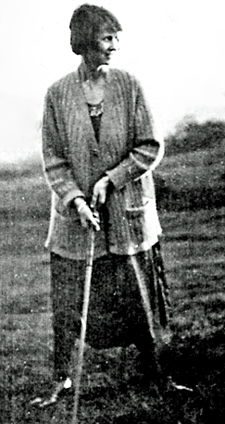 Only a few weeks later, membership had risen to 50, and by the following year, there were over 90 members. Subscription rates were ten shillings for men and five shillings for women.
Only a few weeks later, membership had risen to 50, and by the following year, there were over 90 members. Subscription rates were ten shillings for men and five shillings for women.
By 1897, a clubhouse had been erected, but it soon had to be replaced after being blown down in a fierce gale.
Inter-club matches, especially with the neighbouring Shandon club, were played regularly.
In 1911, the honorary president was Richard Brooman-White, the president Dr Peter McRitchie, vice-president Bailie John Lindsay, captain A.Ewing-Stevenson, secretary Miss M.Campbell, and treasurer Albert Wiltshire.
Serving on the committee were J.Alexander, A.H.Edmiston, the Rev Walter Ireland, the Rev John Paterson, D.G.McCall, W.Wright, Miss M.O.Browne, Miss Fraser, Miss E.Ireland and Miss L.Stark.
The course survived World War One, but inevitably its condition deteriorated over the war years.
Post-war, various imaginative ways of raising funds were used, such as fancy-dress dances and fetes.
In 1930, club captain Alex Douglas responded to earlier criticism about the course in the columns of the Helensburgh and Gareloch Times.
He explained that it was too expensive to keep the course in good condition during the winter months, and that it should be regarded as being in playing condition only during the period from April to mid-October.
Tickets were available at several shops in the village, as well as at the railway station. He hoped that a new pavilion would be erected shortly.
Course and club also served to bring many young people together, and there were some happy spin-offs — Alex Douglas wed club secretary Jessie McKechnie in 1934. Both were school teachers.
Garelochhead is recalled by several former devotees as “quite a fierce little course”.
Burrow’s Guide to the Three Lochs, published in 1936, referred to the course as “hilly, with no licence, no catering and no Sunday play” — a perhaps frank assessment, but hardly a ringing endorsement.
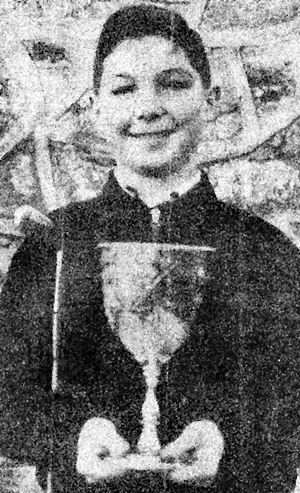 Villager Ian Gillespie recalled winning the mens club championship when he was aged just 14.
Villager Ian Gillespie recalled winning the mens club championship when he was aged just 14.
His adult opponent applied some not-so-subtle psychological pressure during the match, but to no avail, and Ian became the proud possessor of the Vallance Cup — a triumph of youthful exuberance over age and experience not infrequent on the small local golf courses.
The course seems to have survived the early part of the Second World War, but it was lost later on in the conflict. The former clubhouse served as home for the Strachan family until the mid-1950s.
In the late 1950s there was a long campaign to try to have the golf course reinstated. While this was motivated by the best of intentions, it was against a backdrop of plans by the local authority to build houses on the site.
In 1965, this is what happened, Greenfield Housing Estate being the result. In a gesture to the former golf course, one of the streets is called ‘The Fairway’.
Although Garelochhead lost its golf course, there was a spirited attempt in the 1970s to build a golf course just up the road at Finnart. This came in the wake of controversy sparked off by plans for the village of Portincaple to be the site of an oil platform production yard.
After the local planning authority rejected plans for such a development, the landowner submitted plans for a golf course, country club, and 70 chalets, and in 1975 Dunbartonshire County Council gave its approval.
Little happened until 1978, when plans emerged for the creation of a golf course on the site as a local community venture.
A steering committee was formed, and early meetings were well-supported, but a major challenge presented itself when it became clear that each member would be expected to contribute £100 towards the costs and provide voluntary labour.
By early 1979, matters had reached crisis point, but adversity now brought out a fighting spirit, and the organisers showed considerable initiative in managing to secure, transport and erect at Finnart an ex-Wimpey structure from an Erskine building site at a cost of only £125.
Some of the internal fittings came from the former St Joseph’s Primary School in Helensburgh.
Momentum built up, and over the next couple of years, five of the planned nine holes were completed, with some help from the Army and the boys of St Andrew’s Residential School at Shandon.
Meanwhile the landowner had re-submitted his plans for the nearby country club and chalet development to the now Dumbarton District Council.
However there were major problems. Grant aid had been successfully applied for, but the Scottish Sports Council was withholding key instalments because the requisite accounts had not been submitted by the steering committee.
It emerged that grant aid of £10,000 was being sought, out of total projected costs of some £40, 000.
It all ended in tears in 1982, with Donald Campbell, chairman of the steering committee but not a golfer, explaining that local people had missed a golden opportunity for a splendid course, with a projected subscription fee of only £35.
Today, the intended golf course is used as a landfill site, and the clubhouse stands as silent witness to what might have been.
Barremman
The creation of Barremman golf course in 1896 came about largely through the generosity of the owner of the 600-acre Barremman Estate at Clynder.
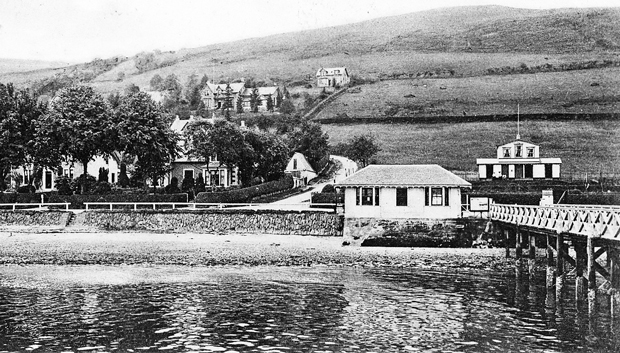
Robert Thom was a remarkable man in many ways. Trained as an analytical chemist, he had a taste for adventure.
He signed up as crew member on a sailing ship bound for Montevideo, which on arrival they found to be at war with neighbouring Buenos Aires. They were able to watch the fighting from the masts of their vessel.
On the return voyage they were forced to abandon ship after the cargo of wool caught fire, and Thom and his companions drifted for three weeks in an open boat before making landfall.
It was an experience that brought him very close to death — indeed, he jumped overboard at one stage in a suicide bid.
Despite this baptism by fire, Govan-born Thom went on to become a successful businessman, owning a carpet-making firm and a trading company, Thom and Cameron. Most of the overseas trade was with the West Indies.
In time he became very wealthy as a result. While retaining a family home at Woodside Terrace in Glasgow, Thom owned the seafront villa of Rockfort in Helensburgh for a number of years before buying the 600-acre Barremman Estate in 1871.
Both there, and on the Island of Canna which he bought in 1881, he gained a reputation as a generous and caring laird.
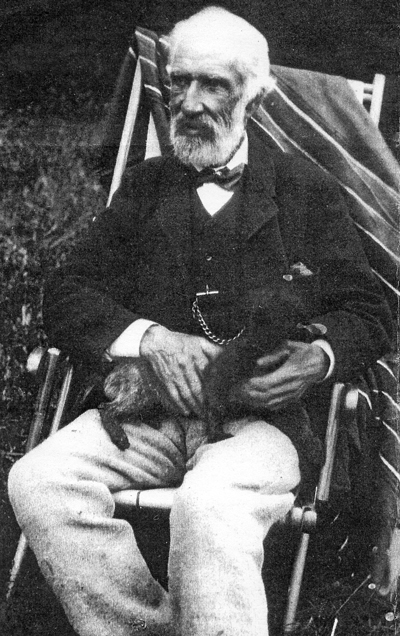 At Barremman, Thom provided many amenities. He built a pier in 1878, which had superior facilities and approach lines for the steamers than the existing pier at Clynder, just 500 yards along the shore. Such was its success, the older pier closed down.
At Barremman, Thom provided many amenities. He built a pier in 1878, which had superior facilities and approach lines for the steamers than the existing pier at Clynder, just 500 yards along the shore. Such was its success, the older pier closed down.
The Thoms also hosted the annual Rosneath Cattle Show, and they provided public entertainments from time to time.
In 1896, a 9-hole golf course was laid out on the hillside at Barremman to the designs of Willie Fernie, the construction being carried out by Andrew Lindsay of Helensburgh.
When the work was completed, Thom handed the facility over to the fledgling golf club which had been formed.
Barremman Golf Club was truly born with a silver spoon in its collective mouth, as not only had Thom borne the cost of creation, he was also making the course available to them free of charge.
As a result it was anticipated that the cost of membership would be very moderate. Mr Logan of Altmhore was appointed secretary and treasurer.
The Helensburgh and Gareloch Times commented: “The course is beautifully situated at the head of Barremman Pier. The facilities were declared open by the donor, Mr Thom of Barremman, in the presence of a very large gathering.”
It was also noted that Barremman had already seen the opening of a bowling green and lawn tennis courts earlier that year, once again through the generosity of Robert Thom.
Sadly there was an accident the following year to the greenkeeper, William Todd. He had been blasting tree roots, and he was seriously injured as a result.
In 1899, the honorary president of Barremman Golf Club was Robert Thom, the president was his son, Robert Wilson, and the honorary secretary and treasurer was A.L.Airth of Ellangowan.
Laidlaw’s Guide to Helensburgh of 1908 refers to the course as being located “on a rather steep hillside”.
Little more is known about the course, and the probability is that it ceased to exist before the passage of many years. Why should this have been the case? Perhaps that the “rather steep hillside” was a factor.
The surrounding communities at Cove and Kilcreggan, Garelochhead and Shandon had their own courses, so the population of Rosneath and Clynder may have proved too small on its own to enable the club to thrive.
Sports-minded residents and visitors may have preferred the tennis courts and bowling green.
Yet another factor could have been the series of misfortunes that were to strike the Thom family. Robert Wilson, who like his father was very active in the community, died suddenly in 1905, while still in the prime of life.
Thom himself died in 1911 at a very advanced age. The family home, the historic Barremman House, was consumed by fire in 1916.
Golfers on the Peninsula may have gained some hope in 1973, when plans were announced for the building of an 18-hole golf course, sports complex and hotel at Mamore Farm.
This prompted the formation of Rahane Residents Association, which agreed to oppose the plans and maintain a watching brief. At an early stage, Helensburgh District Council indicated support for the project in principle.
The plans received a further boost the following year when Dunbarton County Council planning committee recommended support, although strict conditions were laid down, including a stipulation that the golf course be built first.
The project was however controversial, and the result was a public enquiry. The outcome was that the Secretary of State for Scotland, Willie Ross, gave consent for the go-ahead, provided Strathclyde Regional Council were in agreement.
After that there was silence. There was speculation that changes in tax regimes may have caused the developers to cool off, and the identity of the promoters was never revealed.
Craigrownie
Six years before the Barremman course was opened, the go-ahead community of Cove and Kilcreggan, who had sought and obtained burgh status in 1865 and was the smallest town council in Scotland, opened its course in June 1890.
The official opening of Craigrownie Golf Course took place in the presence of “a large and fashionable attendance”, with club captain John Steven of Craigrownie House presiding.
The secretary, Dr Alexander, emphasised the desirability and indeed necessity for such a course.It was noted that Robert Smillie, the farmer at North Ailey, had granted the use of land for the 9-hole course on favourable terms.
Matches having been arranged, the first foursomes teed off, with the ground, notwithstanding the heavy rain, being in fair condition. The view was said to be unrivalled in the West of Scotland.
Just before the outbreak of the First World War in 1914, membership was 50, the secretary was Henry S.Keay, the ladies secretary Miss McLeish, and the professional was Willie McFarlane.
Subscriptions were £1-1/- for men and 10/6d for ladies. Sunday play was not allowed.
The First World War proved the kiss of death for many small clubs, and Craigrownie was no exception.
However, the enterprising people of Cove and Kilcreggan were not to let this become a permanent legacy, and in June 1923, the formal opening of a new course took place.
In the absence of detailed course plans, it is not easy to determine the extent to which the old and new courses overlapped, but certainly at some stage the course was extended to 15 holes, probably to the south.
The course opened in a mood of optimism, it being noted that within the space of a few weeks, there had also been inaugurated the Loch Long Sailing Club, and an 18-hole putting green, with another putting green of similar size in the pipeline.
In 1930, Eleanor E.Helme, a member of England’s ladies golf team twenty years earlier, described Craigrownie as “the most beautiful golf course in the British Isles”.
In 1936, Burrow’s Guide to the Three Lochs refers to the course as 15-holes and being of the “holiday type”. It goes on to state that the first three holes were played again to make up the full 18 holes.
Just prior to the outbreak of the Second World War in 1939, the captain was James McDonald, the local schoolmaster, while the secretary and treasurer was George Somerville, a banker. The ladies section had its own captain, Mrs Steel, and its own secretary, Miss G.N.Sneddon.
However the course was a casualty of the war, and this time did not re-open.
In 1972, plans were announced for the building of a nine-hole course at Kilcreggan. This proposal came at a time of uncertainty over industrial development in the area.
Kilcreggan was one of several places being named as the possible site of a nuclear power station, followed swiftly by rumours of an oil platform construction facility, so possibly the timing of the golfing plans came as an attempt to head off such schemes.
The golf project was given some support by Helensburgh District Council, which suggested that perhaps an 18-hole course might be possible.
But there was a setback later in the year when the Dunbartonshire Education Committee rejected a bid for financial assistance, and little more was heard of the plan.
Arrochar and Tarbet
THE FIRST Arrochar and Tarbet golf course was built in 1904 on ground leased by Tarbet Hotel, and extended from near the Hotel west to the property known as Stuckiedow.
Commissioned by Tarbet Hotel Co., a course of nine holes was laid out to the designs of Willie Fernie, and the formal launch of Arrochar and Tarbet Golf Club took place the following year.

The local newspaper reported: “Of the number of golf clubs and golf courses, there is no end. The North British Railway’s timetable mentions 120 reached by their system alone.
“The latest is Arrochar and Tarbet Golf Club, initiated at a meeting held recently at Tarbet Hotel. There was a good attendance and the club was started with over 50 members.
“A course was laid out a year ago. The greens are already in fine condition, with several equal to any to be found locally, and by drainage and other improvements, the ground is now being steadily improved.
“The course is situated amid a beautiful environment. Fernie said it would be a ‘nice little tricky course’.”
The officebearers elected were captain, Barclay Henry, Arrochar; vice-captain, Harold Hedderwick, Auchendarroch, Tarbet; hon secretary and treasurer, Dr Salmon, Tarbet House.
Guests at the hotel played free of charge, although it contributed £12 annually to club funds.
Shortly afterwards, an exhibition match was played between Willie Fernie and Tom Turnbull, the professional at Helensburgh.
The first round saw Fernie 2 up — Fernie 46 shots, Turnbull 50 — but the second round saw a complete turnaround, with Turnbull making a dramatic comeback to square the match. The final score was Turnbull 90, Fernie 92.
A report in the local paper stated: “Few seem aware of a quite sporting little nine-hole golf course at Tarbet.”
The Arrochar, Tarbet and Ardlui Heritage Group website carries many interesting details of the club at this formative period, along with historic photographs.
As with so many small golf courses, the First World War signalled a period of neglect, and while the course survived, essential momentum had been lost. It is thought that the course was closed around 1921.
Possibly a contributory factor here was the departure in 1922 of the Misses Walker, who were acclaimed for many years of good management of Tarbet Hotel.
The people of Arrochar and Tarbet displayed resilience, however, and by the mid-1930’s another course was in operation.
The new course was located at the Arrochar end of the isthmus, and extended to a point close to the Parish Hall, later the site of Arrochar Outdoor Centre, and now an Army Cadet Training Centre. Club business was transacted at the Parish Hall.
In 1937, the officebearers were hon president Sir Iain Colquhoun; hon vice-presidents Captain R.G. Black, Ardmay, John Galbraith, Arrochar Hotel, and Campbell Henderson, Teighness Temperance Hotel.
The chairman was William Marshall, Schoolhouse; hon secretary and treasurer Miss R.Atkinson; hon assistant secretary J.Anderson; and captain J.M.Reid.
On the committee were Mrs A.McCallum, Mrs Dewie, Miss McKinlay, Miss McNiven, T.H.Campbell, S.McCrorie, P.Cumming, M.McDonald, and H.McDougall.
That the club was thriving was borne out by the programme of events during this period.
For example in May 1937, the monthly competition saw A.McDonald, who was playing from scratch, complete a round of 65, when he beat M.McGourlay, whose handicap of 24 brought him a net score of 83.
McDonald broke the course record, which of course entailed a double round to make up the 18 holes. The mixed foursomes resulted in T.H.Campbell and Miss J.Crawford beating M.Crawford and Miss J.Henderson.
The following month, as well as these same competitions, there was also the Galbraith Cup, played over 72 holes, when T.H.Campbell came out on top with a net score of 137 off a handicap of 9. Second was M.McDonald, and third was R.Gould.
There was also the Fletcher Cup for ladies, with Mrs Horn winning with a score of 167 off a 40 handicap, and Miss C.McKinlay the runner-up with her score of 182, off scratch.
The club played many inter-club matches, and in July 1937, the competition between home side Arrochar and Tarbet against Shandon saw the former win by 4 matches and a half to Shandon’s 3 matches and a half.
Despite this very encouraging picture, the dead hand of war once more came into play in 1939, and the club seems to have been a victim.
While clubs located in bigger population centres were often able to continue in wartime, small rural clubs were always liable to struggle.
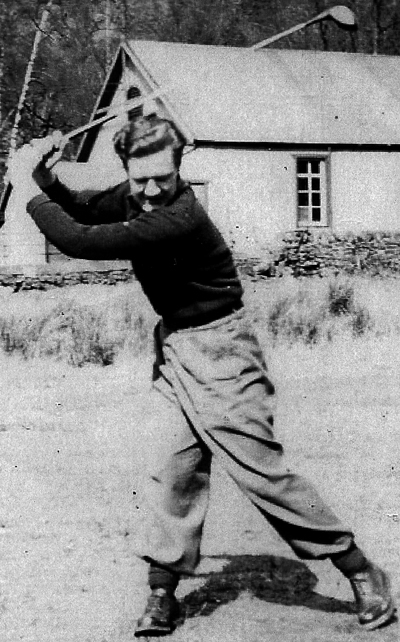 The people of Arrochar and Tarbet, however, stand out as a community determined to bounce back, and a new club took up the reins once more in 1947.
The people of Arrochar and Tarbet, however, stand out as a community determined to bounce back, and a new club took up the reins once more in 1947.
Details are scanty but almost certainly the course itself was similar to the pre-war facility. Meetings were held again at the Parish Hall.
An official guide to Dunbartonshire, produced around 1950, makes reference to a “good golf course near the railway station”.
An insight into club affairs at this stage was provided by the Rev. Iain Reid, author of the Arrochar chapter in the Third Statistical Account of Scotland (1952).
He wrote: “A portion of Tarbet Farm on the south side of the road, and opposite the Parish Hall, has been made over to the local Golf Club, and a very fair nine-hole golf course has been constructed.
“There are not many members, and they find it difficult to keep the course in good condition by voluntary labour.”
The tone of foreboding in Mr Reid’s analysis seems to have been borne out by events, for the record of meetings of the Golf Club at the Parish Hall, checked by local historian Mary Haggarty, show that the last one was held in June 1952.
A further valiant effort to preserve golf at Arrochar and Tarbet was made at the start of 1959. A steering committee was formed, with the local GP, Dr John Mackintosh, as president, and Commander Bayliss as treasurer.
Their hope was that the old golf course of 1904 could be resuscitated, and Tarbet Hotel indicated it would make the land available free of charge.
A great deal of lobbying for support was carried out, there was much enthusiasm, and fund-raising events, such as dances, were held to help raise funds.
It became clear, however, that there was not a lot of capital, and it was evident that a lot of site preparation would have to be done by voluntary labour. Even so, it was hoped to have the course ready by May 1959.
But matters did not work out as planned, and meetings and fund-raising events ceased in 1961 — the dreams unfulfilled.
The keen Arrochar golfer is not easily thwarted however. One such was Jock Campbell of the well-known railway family, and in the early 1960’s, he was a frequent sight on the road to Helensburgh, riding his small motorbike with a huge bag of clubs strapped firmly to his back.
Local golfers may have had their hopes raised again in 1977, when Luss Estates revealed plans to construct an 18-hole course between Arrochar and Tarbet.
The course was to be long and narrow, with a few ups and downs, but it was not intended to be of championship standard.
The project received a boost the next year, when planning permission was granted by Dunbarton County Council, but the project never came to fruition.
Luss
Further down Loch Lomondside, Luss was a late starter, the ambitions for a club and course being announced in the autumn of 1906, when a concert in aid of a proposed 9-hole facility was organised by Lady Colquhoun.
This was held over two evenings, when takings amounted to some £30.
Matters proceeded well, and the course was opened the following year, the start being on the flat ground near the village centre, with players then heading uphill in the direction of Glen Luss, reaching a high point beyond what is now the former Luss Schoolhouse.
The first AGM was held in December 1908 at Luss Public Hall. William Jackson of Camstraddan House, the club captain, was in the chair. The secretary’s report showed the club to be flourishing, while the treasurer announced a favourable balance sheet.
The patron and patroness of the club were Sir Alan and Lady Colquhoun respectively.
The officebearers were: captain, William Jackson, Camstraddan House; vice-captain, Alexander M.Thom, Glenmollachan; secretary, Alexander Forsyth, teacher; treasurer, Charles Murdoch, Mason, Luss.
On the committee were the Rev Alexander S.Dunlop; Messrs John and James McNab, Luss Hotel; Robert Milne; Peter McFarlane, Row of Luss; and James Dempster, Culag.
By 1910, a regular series of events had been developed. In January, the Captain’s Rose Bowl competition saw the final being played between John McKellar of Luss village and Donald McCallum, the latter claiming victory by two holes.
In March, the Monthly Gold Medal competition the first class category winner was Walter McDiarmid Snr, a Luss boatman, whose double round net score of 86 came off a handicap of 15. Winner of the second class was John Cairns of Aldochlay, off 20, who carded a 99.
In June, there was a competition for a medal presented by William McKean of Thistle Cottage, Craignahullie and Rowardennan. This was won over a single round by Robert D. Milne of Luss Hotel, off scratch, with a score of 40.
In August, what was described as a ‘highly successful’ concert in aid of the club was held at the Public Hall.
Sir Iain Colquhoun presided over a full house. Songs were provided by Mrs Davie, Mrs Lang, Miss Douglas Dick, Miss Dunsmore and Messrs Forsyth, Meighan and Crawford. This was followed by a dance.
In September 1912, a concert was held in aid of the club. But at the event the chairman, the Rev Alexander Dunlop, explained that it had been found necessary to abandon the course.
He said that the club was being wound up because of the continuing difficulties in securing the necessary funds, the smallness of the population being a factor. The proceeds of the concert would be used to pay off liabilities.
That was the end of Luss Golf Club — a good example of where enthusiasm can only go so far when the resident population is just too small to sustain a facility like a golf course.
It was probably scant consolation for local golfers when a putting green was opened in 1927 behind the Public Hall. It was designed by Henry Lamond, secretary of Loch Lomond Angling Association, well-known as the author of books about the loch.
Golf did of course come back to Rossdhu, just south of Luss, with the opening in 1993 of the Loch Lomond course.
Designed in a stunning location by top American golfer Tom Weiskopf, the course is consistently ranked among the top 100 in the world, and it is about as different from the original course at Luss as could be imagined.
It is aimed very much at the international market. Despite the universal acclaim and prestige, however, it has suffered much financial difficulty in the wake of the 2008 banking crisis, although the situation is said now to be improving.
Helensburgh
Helensburgh Golf Club was formed in 1893, and plans were soon afloat to construct a suitable course. Old Tom Morris was engaged as designer, and the great man looked at several possible sites.
He considered that the two higher fields of Kirkmichael Farm offered the best location, with a good variety of hazards, including trees, a quarry, an old stone wall, and bushes, rushes and heather.
The only drawback was that there was only sufficient space for a 9-hole course rather than the full 18 holes which had been the ambition of the club.
The 9-hole course was agreed upon, and it was opened in October 1893. In 1905, the course was extended to the full 18 holes, and there was some re-design carried out in 1923, under the supervision of James Braid, a former Open champion.
Helensburgh was able to purchase the course in 1978, and it continues to be a very successful club.
Many fine golfers, both members and visitors, have trod the fairways, and distinguished player-members have included J.Morton Dykes, Colin Dalgleish and Gary Orr.
Another name of high repute is that of Tom Turnbull, clubmaster and professional at Helensburgh for 51 years, who extended the course to 18 holes.
When he retired in 1947, his son Guy took up the reins in his place. The course record is an incredible 62, set by junior member Simon Barras (16) in 2005.
Cardross
Cardross is now renowned as one of the finest inland parkland golf courses in the west of Scotland, but it began life as a modest 6-hole facility back in 1895.
That course was not on the same site as the present one, though both lay on what was Kilmahew Estate. Cardross Golf Club was granted the use of an area to the south of the main road by the landowner, shipping magnate John Burns.
The original course was located in an area of around 17 acres, bounded by Main Road, Smithy Road, the railway and Station Road.
The first club secretary was John Smith and the first captain John Scott.
For reasons unknown, the club did not fulfil early promise, and by 1901 membership had slumped to 64, by which time Cardross had resigned from the Dunbartonshire Golf Union.
John Smith is credited with keeping things going through a difficult patch, and in 1903, changes were made which proved to be the salvation of the club.
Willie Fernie was engaged to design an 18-hole course on land to the north of the main road. The result was a masterpiece, a superb course of par 72.
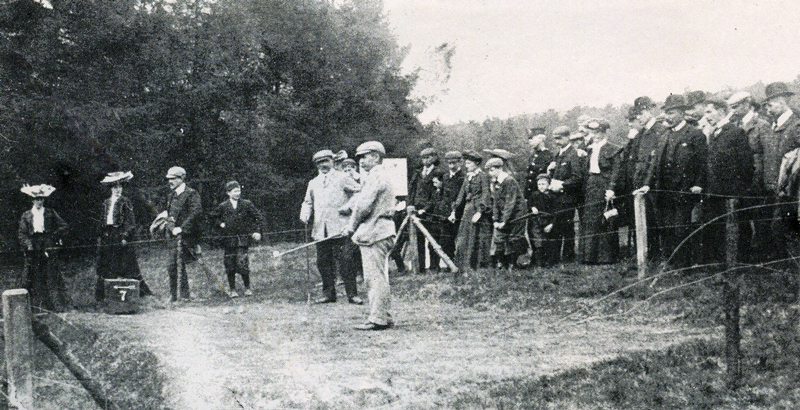
The opening was marked by a match between Fernie and Ben Sayers, with Fernie on 76 winning by one shot.
The club professional for 30 years, Sim Wallace, served his apprenticeship under Fernie at Troon, starting at the age of 14.
The Fernie name has been perpetuated through one of the holes, the ‘Fernie First’, and by the naming of a village housing development, Fernie Gardens.
The new-found strength of Cardross enabled it to survive the rigours of the First World War, although the clubhouse was commandeered for munitions work and some greens given over to sheep grazing.
Some design changes were carried out in 1921 by James Braid, who carried out similar work at Helensburgh two years later.
As a result of World War Two bombing raids Cardross lost its clubhouse, although golf was played during the war years. A new clubhouse was built after the war.
The club has been distinguished by many top-flight golfers of the calibre of William Davis, Charlie Green, Keith Macintosh, Gladys Cadden, her sister Suzanne McMahon, and Iris Keywood.
Dumbarton
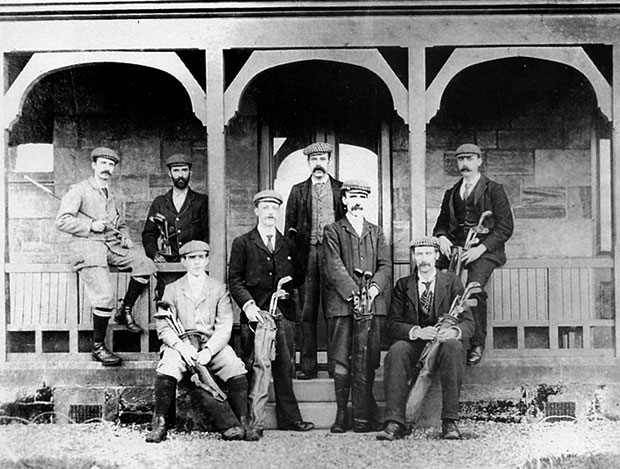 As the ancient capital of Strathclyde, it is appropriate that the first golf club and course to be formed in the area was that at Dumbarton.
As the ancient capital of Strathclyde, it is appropriate that the first golf club and course to be formed in the area was that at Dumbarton.
The legend goes that the inspiration came from a holiday at St Andrews on the part of several townspeople.
Prominent in the formation of the club in 1888 were several members of the Denny family of shipbuilding fame.
Another founder member, and the first Captain, was Chief Constable Charles McHardy, who is credited with having practically introduced the game of golf to Dunbartonshire. Golf was undoubtedly played at Dumbarton and elsewhere prior to being put on a formal footing.
A 9-hole course was laid out at Broadmeadow, a floodplain of the River Leven. On such a site, drainage was always going to be a major consideration, but challenges were overcome, provision was extended to 18-holes, and the course has more than stood the test of time.
An interesting history of the club has been published, and Dumbarton has produced many fine golfers over the years, with several, like Walker Cup player and selector Charlie Green, becoming household names. Prime Minister Andrew Bonar Law and author A.J.Cronin were also members.
Jamestown
Little information has come to light about the people behind the Jamestown golf course, but the opening of a 9-hole facility took place around July 1902 with John Miller appointed as club captain.
The course was a flat one at the north end of Jamestown, and it was bounded by busy roads on all sides. To the south and east was the River Leven, and large textiles factories.
The limitations of the course itself were laid bare by local historian John Neill, when he wrote: “It is a course without great natural hazards. For learners, it is all right, but golfers who require a course to test their skills travel further afield.”
Nonetheless, the promoters must surely deserve praise for providing a recreational amenity in an otherwise bustling industrial setting.
The location of Jamestown meant that inevitably envious and speculative eyes were constantly being cast over the greens, because this was prime real estate.
The first breach in the defences took place in the 1920's, when Carrochan Road was driven through, effectively cutting the course in half.
Archie Aitken, who grew up in Jamestown, recalled how this challenge was accommodated.
“Iron wicket-gates in semi-circular enclosures were erected on both sides of the road,” he said, “thus allowing golfers to cross the obstacle and continue their round on the other side. There were large iron gates to allow access for vehicular traffic, like grass-cutting machines.”
The killer blow for the Jamestown part of the course came with the Second World War. Military-related work led to the building of temporary accommodation for key workers.
Known as ‘The Hostels’, these were retained post-war to help alleviate a housing shortage. Today, the site of the former golf course is occupied by modern housing and St Kessog's Primary School.
Vale of Leven
The golf course opened in 1907 at Northfield, Bonhill, by the newly formed Vale of Leven Golf Club, did not follow the conventional pattern of using the services of a professional course designer.
Instead, it was in large measure the brainchild of John McMeekin, mine host at the Black Bull Inn at Bonhill.
John was an amazing man in many respects. He worked as a dairyman in Edinburgh before moving to the Vale, where he and his wife raised an extremely large family.
Skilled as a musician and instrument maker, he somehow found time to start a rifle club and a quoits club.
His interests also extended to golf, and his drive and enthusiasm to form a golf club met with a sympathetic ear in two influential men, Mr Wilson, the manager of Dalmonach Printworks, and Arthur Pollock, manager of Dillichip Printworks.
Around 1903, McMeekin succeeded in obtaining the lease of two fields at Northfield, part of the Strathleven Estate owned by the Crum-Ewing family.
When work began to construct a course, it was carried out in the main by voluntary labour under the direction of McMeekin, the result being a 6-hole course on the braes above Bonhill, this being extended over time to 9-holes.
As the course neared completion, efforts were now concentrated on formalising a corresponding club, and Vale of Leven Golf Club was duly launched in April 1907.
The opening of the course was presided over by Alexander Wylie of Cordale, while Mrs Crum-Ewing had the honour of driving off the first ball.
As author John Neil commented, Northfield had what Jamestown lacked — it had suitable challenges, and was beautifully situated, with much to commend it.
The original clubhouse comprised a converted railway carriage, and this served its purpose for some time, before being replaced by the former clubhouse of Helensburgh Golf Club, where a new building was installed in 1910.
The enterprising Vale of Leven Club dismantled the redundant Helensburgh building, which was made of corrugated iron, and transported it by horse and cart to Northfield for re-erection.
This in turn was eventually replaced by a new building in 1970, once more using voluntary labour.
The golf club at Jamestown amalgamated with Vale of Leven in 1909, the result of the incorporation being that by 1911, Vale of Leven Golf Club was in possession of an 18-hole facility.
Ultimately, though, the Jamestown section was lost to development. Always resourceful, the Vale folk contrived to expand Northfield to 18-holes, although during the Second World War some of the land had temporarily to be given over to agriculture.
In 1952, the club was enabled to buy the land on which the course was situated, at a cost of £1,500.
In more recent times, the club has overcome several challenges of industrial development, one being the laying of a B.P. pipeline in the 1980's, as a result of which the oil giants sponsored the club for a number of years.
The club happily survives and thrives to the present day.
